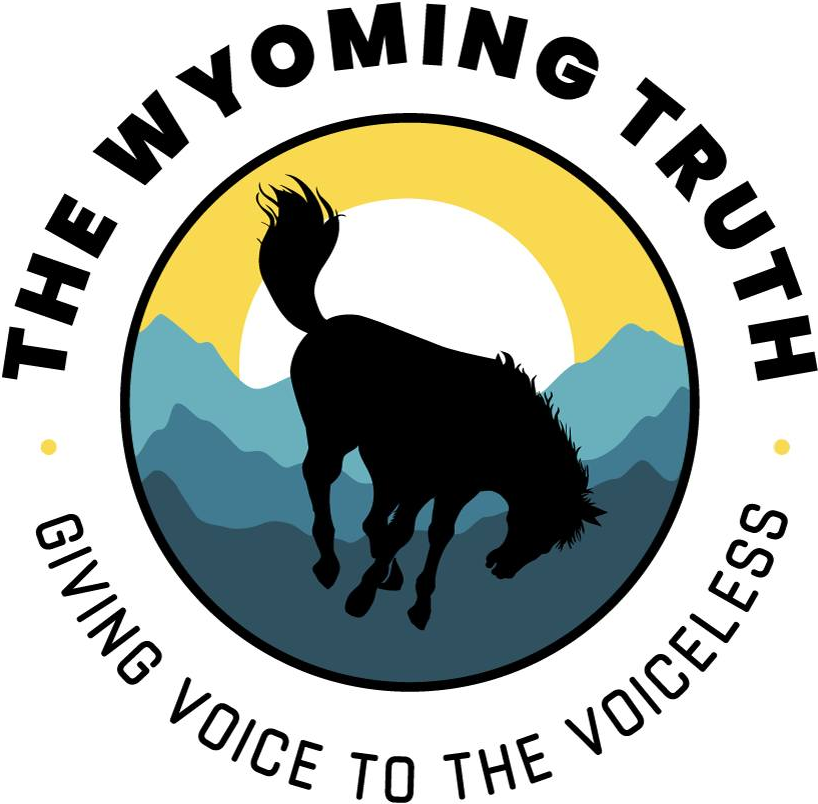Hageman Chairs Congressional Hearing on Law Enforcement Challenges on Tribal Lands
Wyoming tribal official testifies to staffing shortages, recruitment challenges
- Published In: Politics
- Last Updated: Nov 16, 2023

Rep. Harriet Hageman (R-Wyo.) chaired a congressional hearing Tuesday exploring tribal communities' issues with law enforcement matters. (Photo via YouTube / House Committee on Natural Resources GOP)
By Jacob Gardenswartz
Special to the Wyoming Truth
WASHINGTON — Lawmakers on the House Natural Resources Committee’s subcommittee on Indian and Insular Affairs explored the many law enforcement challenges tribal communities face during a hearing Tuesday, as Native American tribes in Wyoming and nationwide report funding disparities and staffing shortages severely impacting public safety on reservations.
Chaired by Rep. Harriet Hageman (R-Wyo.), the hearing brought together tribal leaders from across the country, including representatives from the Chehalis Reservation and Tulalip Tribes in Washington, Muscogee Creek Nation in Oklahoma and Northern Arapaho Tribe in Wyoming. Also providing testimony was Department of the Interior’s Assistant Secretary for Tribal Affairs Bryan Newland, who oversees tribal matters.
“Everyone deserves to feel safe in their community,” Hageman said in her introductory remarks. “Yet that is not the case for so many tribal reservations.”
She highlighted statistics showing Native Americans are victims of violent crimes at significantly higher rates than non-Native people. Per the Department of Justice, 83% of Native Americans and Alaska Natives face violence at some point in their lives, the majority of which is perpetrated by non-Native people.
In their testimony, tribal officials pointed to three main reasons for the difficulties they experience and urged lawmakers to take action to remedy them: recruitment and retention of law enforcement officers on tribal lands; confusion about which agencies have jurisdiction over crimes in Native American country; and the devastating impact of drugs on Native American communities.
In contrast to the goings-on in Congress of late, Tuesday’s discussion proceeded mostly without partisan fireworks; Republicans and Democrats acknowledged the difficulties tribal communities face and sought solutions to improve public safety.
Still, there were disagreements about how best to respond to these challenges. Rep. Teresa Leger Fernández (D-N.M.), the ranking Democrat on the panel, argued that any Congressional response necessitated a “full range of social and economic programs needed to combat the deeply rooted issues that underlie the violence against Native people” — not just a focus on law enforcement.
Hageman, meanwhile, suggested tribal communities’ drug problems stemmed from an “open border,” playing into her long-standing push for more restrictive immigration policies.

Yet Leger Fernández noted the vast majority of fentanyl — the synthetic opioid which is wreaking havoc in reservations — enters the U.S. via citizens and through legal ports of entry, not via undocumented immigrants on illegal migration routes.
Tribal leaders, for their part, seemed less concerned with where the drugs come from than with how to handle them once they got there.
“We have been left to battle against a wave of elite illegal narcotics without adequate support from our federal partners,” testified Chris Sutter, chief of police for the Tulalip Tribes in Tulalip, Washington.
A ‘massive gap’ in funding
Among the biggest, and most straightforward, problems for law enforcement on tribal lands is a funding shortfall.
According to a recent report from the Bureau of Indian Affairs (BIA), the agency in 2020 spent $246 million on law enforcement, $123 million on detention facilities and $62.8 million for tribal courts. Yet the report noted the total estimated needs for public safety and justice programs were $1.4 billion for law enforcement, $247 million for detention centers and $1.2 billion for tribal courts.
“It’s clear that there’s a massive gap between present funding levels and needs for public safety in Indian country,” Newland testified.
Hageman, who typically supports federal spending cuts, pressed Newland on why problems persisted despite recent increases in BIA funding. He agreed the increases in federal appropriations “allowed tribal governments to buy new equipment and hire new officers,” but argued the agency is “still behind what the total need is.”
And Leger Fernández highlighted the impacts to BIA funding in the 2024 government funding proposals currently being debated. House Republicans’ proposed budget for Commerce, Justice and Science, she said, would cut tribal law enforcement funding by $2.5 million.
Problems with staffing, retention
While budget shortfalls manifest in law enforcement issues on tribal lands, they’re most evident in widespread staffing and retention problems, tribal officials report.
In Wyoming, just three tribal fish and game wardens are tasked with patrolling 240 lakes, 1,100 miles of streams and 2.2 million acres of tribal lands, Arapaho Business Council chairman Lloyd Goggles, of Wyoming, testified.
Some of the struggles tribal communities face in recruiting staff are unchangeable: many reservations are in remote areas, providing few avenues for social interactions while requiring dangerous and difficult work.
But discrepancies between pay and benefits for tribal law enforcement and those in other police agencies have made officer retention increasingly difficult. Some officials said upwards of 50% of their staff left to pursue careers outside the reservation.
“Law officers who put their lives on the line to secure this safety are not afforded the same compensation benefits and or protections that their federal colleagues receive,” said Jonodev Chaudhuri, ambassador of the Muscogee Creek Nation. “There’s no reason to treat [tribal officers] as inferior or less adequate when compared to state or federal law enforcement officers.”
On this point, there is a possible fix in the works. A bipartisan bill introduced last summer by Reps. Dan Newhouse (R-Wash.), Derek Kilmer (D-Wash.) and Sharice Davids (D-Kan.) would allow some tribal officials to be considered as “federal law enforcement officers” and receive the same injury and death, retirement and pension benefits.
“The measure would provide Indian tribes nationwide with a critical tool to address law enforcement recruitment and retention challenges,” said Dustin Klatush, chairman of the Confederated Tribes of the Chehalis Reservation.
Tribal sovereignty remains key
As in past hearings, Native American leaders expressed their desire for greater sovereignty over tribal lands — particularly when it comes to law enforcement.
Due to the 1978 U.S. Supreme Court decision in Oliphant v. Suquamish Indian Tribe, tribal courts have virtually no criminal jurisdiction over non-Native people. The Violence Against Women Act subsequently granted such courts the ability to oversee domestic violence issues, but when it comes to most other crimes, including criminal drug possession and dealing, tribes’ hands are often tied.
“That’s the original sin, here,” said Chaudhuri. “We are handcuffed in being able to protect our folks.”
What’s resulted is a confusing patchwork of overlapping jurisdictions among federal, state and tribal officials that makes investigating crimes incredibly difficult.
“I believe, if we got the full jurisdiction over non-tribals, I think that’s going to be a lot better for our tribal police,” Klatush testified.
Lawmakers appeared to recognize the trouble the current system posed, though no legislative solutions have been offered.













